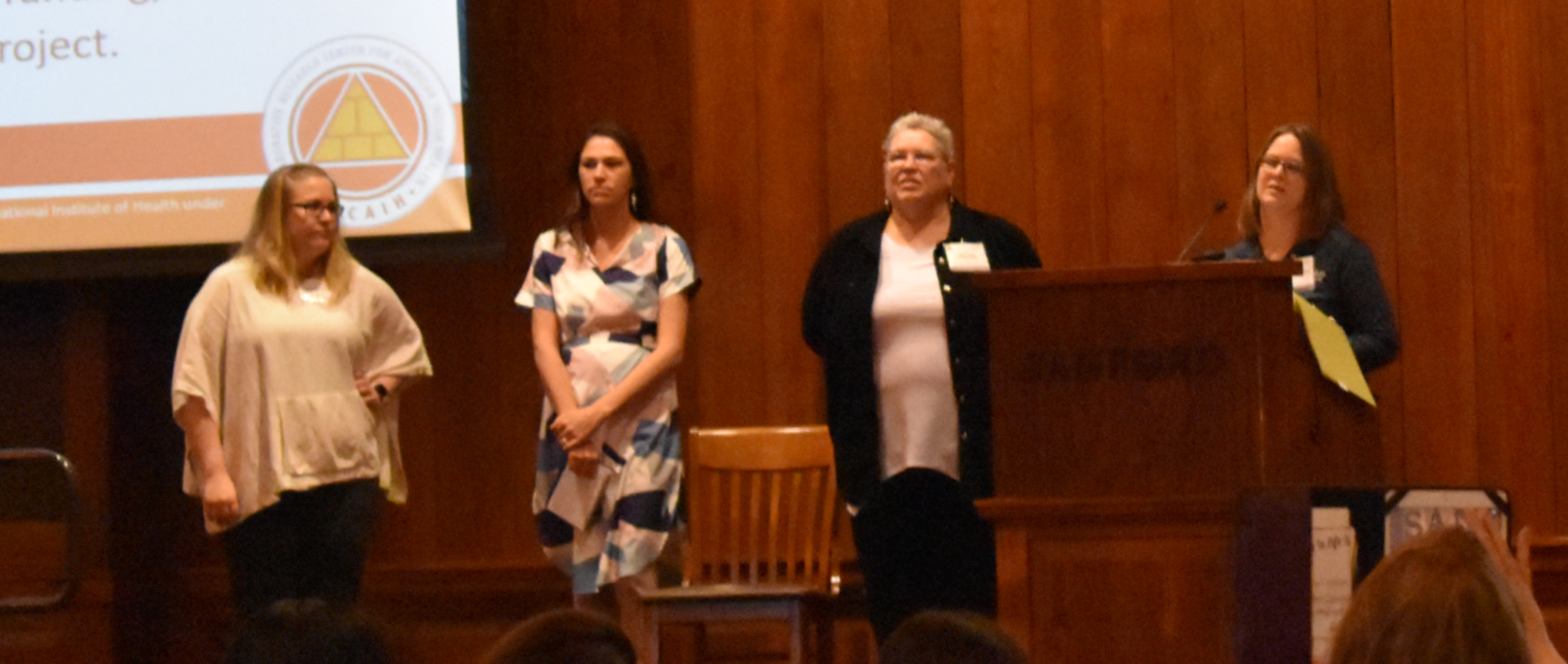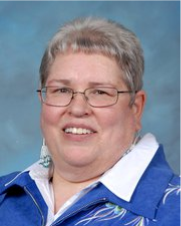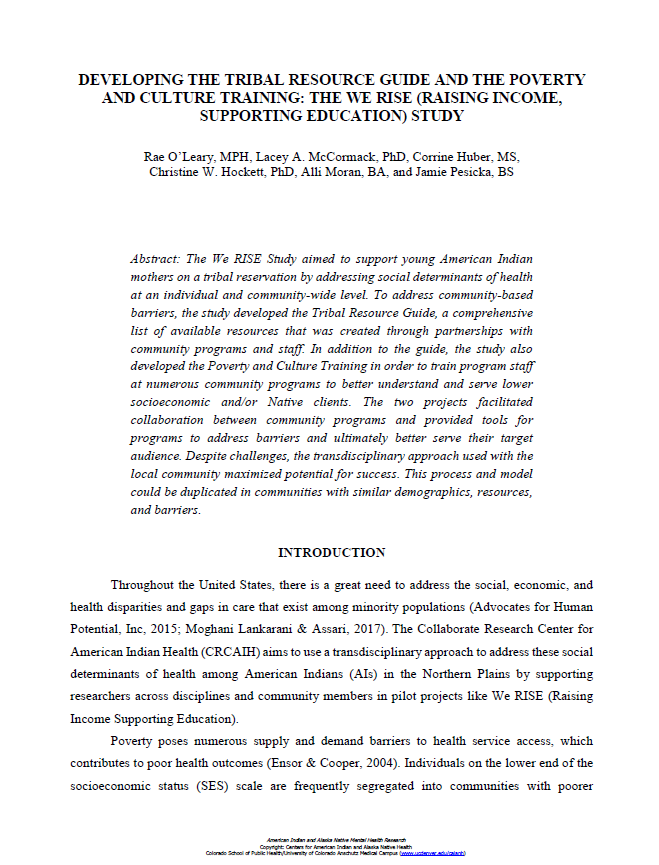2016 CRCAIH Pilot Grants Program Awardees

Wac'in Yeya: The Hope Project

 Jacqueline Gray, PhD (University of North Dakota)
Jacqueline Gray, PhD (University of North Dakota)
Lisa Schrader, MSD (Oglala Sioux Lakota Housing)
The suicide rate among indigenous youth in the Northern Plains and in particular the Pine Ridge Reservation is at an alarming rate. Many programs that are available for funding and implementation are evidence based in the general population, but are not culturally relevant and do not have evidence that they are successful in American Indian communities. The complaint of many tribes are that research is focused upon what is wrong rather than what is right in their communities. A primary issue related to suicidality is hopelessness, however; there is a paucity of research on what instills hope in our indigenous youth . The aim of this project is to determine culturally specific determinants of hopefulness among Lakota youth (14-24 years of age) that will be used to inform future suicide prevention research in indigenous communities, especially the Northern Plains.Wac' in Yeya: The Hope Project has three components . The first phase is to conduct focus groups with youth about what provides them with hope. These group meetings are followed with the youth participating working with local youth and adult leaders to develop Photo Voice Projects that provide culturally relevant representations of visual, music, dance, and other aspects of those factors they identify that instill hope. The third component of the project is a community meeting where the youth present their projects to an invited group of family, other youth, and community members. The concepts generated by the youth will be utilized to design suicide prevention projects that instill hope in Lakota youth in an area where the suicide rate has been at an epidemic rate over the past year. By having youth generate the concepts of hope and provide input on what would be hopeful for them, it is expected that these programs will have youth buy in, cultural relevance, and a greater impact for the community.
Related Publications
 |
Wac'inyeya: Hope Among American Indian Youth. Gray, J. S., Schrader, L., Isaacs, D. S., Smith, M. K., & Bender, N. M. American Indian and Alaska Native Mental Health Research |
We RISE (Raising Income, Supporting Education) Project on the Cheyenne River Sioux Reservation

 Lacey Arneson McCormack, PhD, MPH, RD, LN, ACSM Ep-C (South Dakota State University)
Lacey Arneson McCormack, PhD, MPH, RD, LN, ACSM Ep-C (South Dakota State University)
Rae O'Leary, RN, RRT, AE-C (Missouri Breaks Industries Research Inc.)
The overarching goal of the We RISE (Raising Income, Supporting Education) project is to impact health behaviors by addressing the low socioeconomic status (SES) of young American Indian mothers through setting goals related to income and education. Socioeconomic status is the root cause for many health disparities, this project is unique because it proposes to investigate the impact of improving SES in a sustainable way. American Indians, especially those of the Cheyenne River Sioux Tribe, experience alarming rates of obesity, illness and chronic disease, such as diabetes, heart disease, and lung disease to name a few. To compound the health disparities, poverty is simply a way of life. Little is known about effective interventions to reduce the burden of health disparities in Indian Country by improving SES through goal setting. This transdisciplinary Community Based Participatory Research (CBPR) approach to impact factors influencing health behavior, such as locus of control, sense of well-being and self-efficacy, will use motivational interviewing techniques, goal setting with attainment, and improved utilization of community resources. Our specific aims are to 1) assess the effect of setting and attaining income- and education-related goals on factors that influence health behavior, 2) develop and disseminate a "Cheyenne River Resource Tree" highlighting community programs purpose, resources and contact information, and 3) assess the impact of a Ruby Payne Poverty & Lakota Culture Training on community program workers. The target audience of the We RISE project is two-fold: young mothers and community program employees. The transdisciplinary approach to this project is imperative to address both individuals and the community to ensure a more holistic and systematic approach to creating change. A randomized intervention-control trial of 60 young mothers to children age 0-12 will be conducted, with half receiving the intervention which consists of working with a mentor to set and attain a goal related to 1) job skills, 2) education advancement or 3) personal finance and using a new community program from the Cheyenne River Resource Tree. This pilot project can serve as a model for tribes or other populations with similar barriers to good health. Participants from this project could also be called upon in future studies to measure the long-term impact on health behaviors and outcomes.
Related Publications
 |
Using Goal Setting and Attainment to Impact Indicators of Health Behavior Change among Young American Indian Women: The We RISE (Raising Income, Supporting Education) Study. McCormack, L. A., O'Leary, R., Moran, A., & Hockett, C. W. American Indian and Alaska Native Mental Health Research |
 |
Developing the Tribal Resource Guide and the Poverty and Culture Training: The We RISE (Raising Income, Supporting Education) Study. O'Leary, R., McCormack, L. A., Huber, C., Hockett, C. W., Moran, A., & Pesicka, J. American Indian and Alaska Native Mental Health Research |
REDTalks video: "Development and Dissemination of Tribal Resource Guide"
